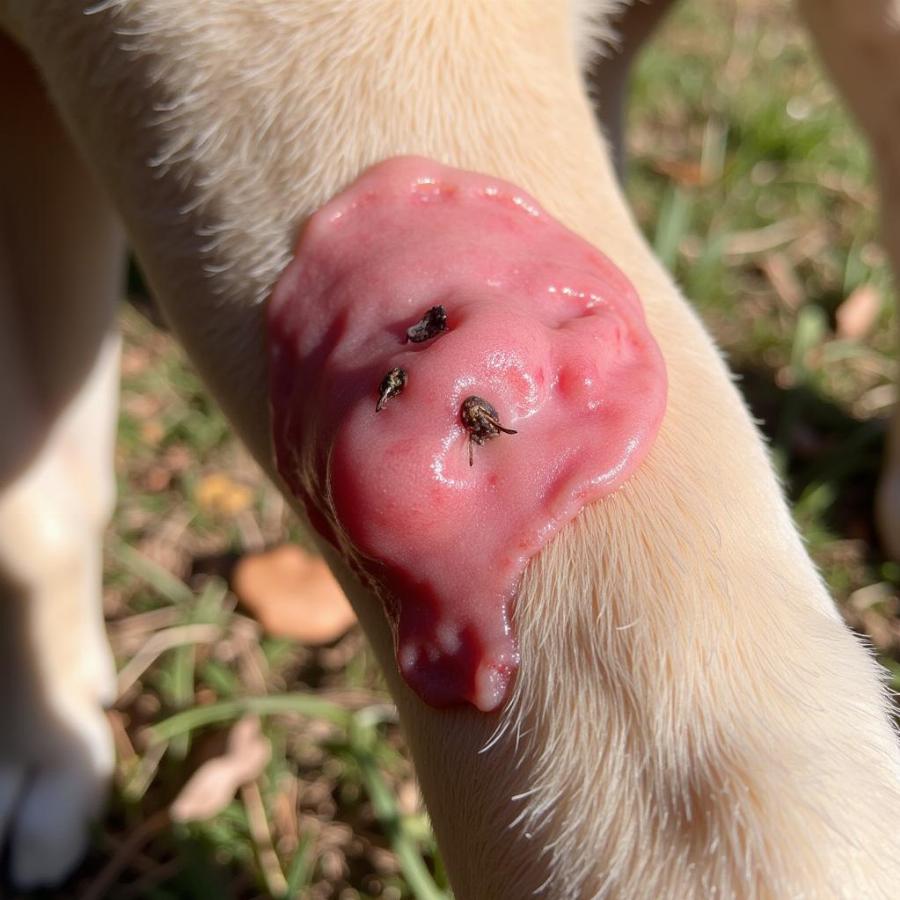A dog killing a snake can be a frightening experience for any owner. While our canine companions often act as protectors, their instinct to chase and confront snakes can put them at risk. Understanding why dogs kill snakes, the potential dangers involved, and how to prevent these encounters is crucial for responsible pet ownership. This article explores these topics, offering valuable insights to keep your furry friend safe.
Why Do Dogs Kill Snakes?
Dogs are naturally curious and have a strong prey drive. Movement, especially the slithering of a snake, can trigger this instinct. They may see the snake as a toy or a threat, leading them to attack. Territoriality also plays a role. A dog may kill a snake to protect its perceived territory, which includes your home and yard. Additionally, some breeds are inherently more prone to chasing and attacking small animals, including snakes.
What Breeds Are More Likely to Kill Snakes?
Terriers, bred for hunting vermin, are often at the forefront of snake confrontations. Other breeds like Dachshunds, Australian Shepherds, and Jack Russell Terriers also exhibit a higher propensity for chasing and attacking snakes due to their energetic and inquisitive nature. However, any dog, regardless of breed, can engage with a snake if provoked.
The Dangers of Snake Bites to Dogs
Snake bites pose a serious threat to dogs. Venomous snakes can cause a range of symptoms, from localized swelling and pain to life-threatening complications like organ damage and paralysis. The severity of the bite depends on the type of snake, the amount of venom injected, and the size and health of the dog. Even non-venomous snake bites can result in infections and abscesses if left untreated.
Recognizing Snake Bite Symptoms in Your Dog
If your dog has encountered a snake, watch for signs of a bite. These may include:
- Swelling and bruising at the bite site
- Puncture wounds
- Bleeding
- Weakness or collapse
- Vomiting and diarrhea
- Difficulty breathing
- Tremors or seizures
If you suspect your dog has been bitten by a snake, seek immediate veterinary attention.
 Dog Showing Snake Bite Symptoms
Dog Showing Snake Bite Symptoms
Preventing Snake Encounters
Minimizing the risk of snake encounters is essential for protecting your dog. Keeping your yard tidy by removing debris, tall grass, and woodpiles reduces potential hiding spots for snakes. When walking your dog, especially in areas known for snake activity, keep them on a leash and avoid letting them roam freely in tall grass or underbrush. Training your dog to avoid snakes is also beneficial. Teaching a “leave it” command can be invaluable in redirecting their attention away from a potential threat.
What to Do if Your Dog Encounters a Snake
If your dog encounters a snake, try to remain calm and slowly back away. Avoid sudden movements that might startle the snake and provoke an attack. If your dog has been bitten, try to identify the snake if possible, but prioritize getting your pet to a veterinarian as quickly as possible.
Conclusion
A dog killing a snake is a natural instinct, but one that carries significant risks. Understanding these risks and taking proactive steps to prevent snake encounters is crucial for responsible dog ownership. By maintaining a safe environment and educating yourself about snake bite prevention and first aid, you can help ensure your furry friend’s safety and well-being. Regularly checking your yard for snakes and keeping your dog on a leash in snake-prone areas can significantly reduce the chances of a dangerous encounter.
FAQ
- What should I do if my dog kills a snake? Check your dog for any signs of a bite and seek veterinary attention if necessary, even if you don’t see any obvious wounds.
- Are all snakes dangerous to dogs? No, not all snakes are venomous, but even non-venomous bites can cause infections. It’s best to treat all snake encounters as potentially dangerous.
- How can I train my dog to avoid snakes? Consult with a professional dog trainer for effective snake aversion training.
- What are the most common types of venomous snakes? This varies depending on your location. Research the venomous snakes common in your area to be aware of the potential threats.
- What is the best first aid for a snake bite? Get your dog to the veterinarian immediately. Do not attempt to treat the bite yourself.
- How can I make my yard less attractive to snakes? Keep your yard tidy, remove debris, and trim vegetation to eliminate potential hiding spots.
- Are certain times of year more dangerous for snake encounters? Snakes are most active during warmer months. Be extra vigilant during spring and summer.
Beaut Dogs is your trusted source for comprehensive and reliable information on the world of dog breeds. From breed-specific care guides to expert advice on health, nutrition, and training, Beaut Dogs empowers you to provide the best possible care for your canine companion. Visit us at https://beautdogs.com. When in need of expert advice, contact us at [email protected] (Email address) for detailed and accurate answers from the Beaut Dogs team.